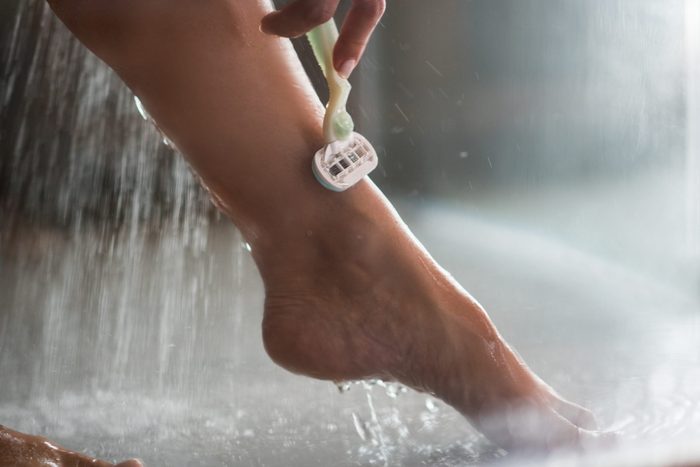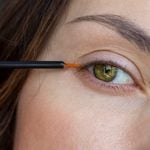Does Shaving Make Hair Thicker?

If you opt to remove excess body hair, you likely do so hoping it doesn't come back thicker or darker. Here's what really happens when hair regrows after you shave.
If you want to remove unwanted body hair, whatever removal method you choose will usually have some pros and cons.
On one hand, there’s the expensive and time-consuming option of laser hair removal, which can also be more precise and offer longer-lasting results than other methods. Then there’s waxing, sugaring, or epilating, which each have their advantages and disadvantages.
Still, one of the most common methods is shaving with a razor. While it’s inexpensive, painless (hopefully), and convenient, this method can lead to cuts and ingrown hairs. Some people even believe that it leads to hair growing in thicker or darker.
Yet, a clinical trial as early as 1928 found that shaving had no effect on hair growth, according to the BMJ. And more recent studies confirm that shaving does not affect the thickness or rate of hair regrowth, the same report found.
Experts explain the root of this myth, why hair looks different after shaving, and how to get a better shave, too.
(Related: 6 Ways You’re Shaving Your Legs Wrong)
What does shaving do to hair?
Shaving does not change the rate of growth, colour, or thickness of hair, according to Annie Gonzalez, MD, a board-certified dermatologist at Riverchase Dermatology in Miami.
“After shaving, the hair follicles continue to grow under the skin, thus causing the hair follicles to become irritated, which may cause irritation, itchiness, or painful red bumps,” she says. “Shaving incorrectly or razor burn can also cause the skin to itch after shaving.”
Other shaving side effects include ingrown hairs, cuts, and pimples.
(Related: How Laser Hair Removal Cured My Ingrown Hairs)
Does shaving make hair thicker?
Good news: Dr. Gonzalez confirms it’s a myth that shaving makes hair grow back thicker. “Right after you shave, the tip of your body or facial hair may feel coarse, making the hair appear thicker and darker, but it is not,” she says. “Cutting part of the hair does not change anything about the regrowth process, and there is no science behind hair growing back thicker or darker after shaving.”
The act of shaving removes the dead portion of hair, not the living section lying below the skin’s surface, which is why it doesn’t affect the rate or type of growth, according to the BMJ.
After shaving, the hair grows back with a blunt tip and typically feels stubbly and coarse, which is why it can sometimes appear thicker. Plus, the sun and other chemical exposures have not yet lightened the new hair, making it appear darker or thicker. Hence that’s the origin of the beauty myth that hair grows back thicker after shaving.
(Related: Why Some Women are Shaving their Faces)
Could other hair removal treatments make hair less thick?
Yes. Laser treatment reduces hair density and puts hair follicles in a state of dormancy for a long time, Dr. Gonzalez says. When the hairs grow back, they will be thinner and finer than they would be with other hair-removal methods.
Shaving tips from an expert
Dr. Gonzalez offers some of her top tips to on how to shave your legs and make shaving a good experience.
Here’s what she recommends:
- Shower with lukewarm water because hot water while showering and shaving can reduce the skin’s moisture content, leading to dryness and irritation.
- Shave in the direction of hair growth where your skin is more sensitive to avoid razor bumps, irritation, and cuts.
- When shaving, use a moisturizer or shaving cream, rinse the razor with water after every stroke, and make sure to exfoliate the bikini line before and after shaving.
Next: 9 Personal Care Product Upgrades You Never Knew You Needed




